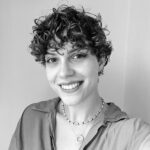- 25 Eylül 2024
- 1990 defa okundu.
Fall In Byzantion
ANAMED tarafından düzenlenen Fall In Byzantion etkinlikleri, 9 Eylül - 7 Aralık tarihleri arasında yapılacak.

A Viking in th eSun: Harald Hardrada, the Mediterranean, and the Nordic World, between the late Viking Age and the Eve of the Crusades Symposium 2 (Istanbul): Women and Power
Date: 9–10 September 2024
Location: The Swedish Research Institute in Istanbul
Organizer: The Swedish Research Institute in Istanbul, Edinburgh University & Snorrast of a Institute / A Viking in the Sun
(Participation by application only – event@sri.org.tr)
This symposium explores how powerful women shaped the world of Harald Hardrada, the early Norwegian king who spent formative years first in KievanRus’ and then in Byzantine service in Constantinople. From Byzantium, Harald returned to Northern Europe to claim the crowns of Norway, Denmark, and England, where he died at the Battle of Stamford Bridge in 1066. This symposium will develop a wide-raging discussion and comparison on the broad theme of women and power across the varied cultures with which Harald interacted.
Looking for Byzantium: Modernism and the Byzantine Cultures
Date: 11 – 12 October 2024
Location: Haliç University
Organizer: Demet Karabulut Dede dmtkrblt@gmail.com, Christos Hadjiyiannisc hadjiyiannis@yahoo.com, Benjamin Kohlmann
The relationship between modernist writing and art, and the many cultures of the Byzantine Empire is long, multifaceted, intricate, important–and understudied. This proposed conference seeks to mount a methodical examination of this relationship. Through focusing on a set of specific scholarly questions, the conference will stir and facilitate the discussion and analysis of different ways in which Byzantine cultures were appropriated and reimagined in the centuries since the end of Byzantium.
324: Constantine’s Choice and the Foundation of New Rome
Date: 7–8 November 2024
Location: Pera Museum
Organizers: Paul Magdalino, Brigitte Pitarakis, Istanbul Research Institute, Pera Museum, elif.ozsoy@iae.org.tr
This symposium celebrates the 1700th anniversary of Constantine I founding Constantinople as the new capital of the Roman Empire. Covering the period from the Tetrarchy to the reign of Constantine’s sons, the conference takes a holistic and interdisciplinary approach in exploring the origins of this bold urban project and its multifaceted impact. How the city of the mythical Byzas turned into the city of the historical Constantine is the essential question framing this examination of a little-known era of the capital’s history.
Türkiye’de Bizans Çalışmalarını Yeniden Düşünmek: Kavramlar, Terimler ve Yöntemler – I
Date: 29 November-1 December 2024
Location: Pera Museum (Participation by application only)
Organizer: Boğaziçi University Byzantine Studies Research Center, byzantinestudies@bogazici.edu.tr
A year after the 100th anniversary of the Republic of Turkey, Byzantinists of Turkey are convening to discuss the past, present and future of Byzantine studies in Turkey. The workshop consisting of 10 sessions with long Q&A sections will explore the subject choices, methods, theories, concepts and terms employed by historians, art and architectural historians and archaeologists from the foundation of Republic up to the present. The major themes to be addressed are historiographical and methodological trends, terminology and periodization, development of reference works and sub-disciplines as well as language education and translation activity.
19th ANAMED ANNUAL SYMPOSIUM
Nurturing Byzantium: Growth, Change, and Vibrance in Byzantine Studies, A Symposium Dedicated to the Memory of Robert G. Ousterhout (1950–2023)
Date: 6-7 December 2024
Location: ANAMED
Organizer: Suna Çağaptay, Tolga Uyar, Engin Akyürek, ANAMED (Koç University Research Center for Anatolian Civilizations), anamed_info@ku.edu.tr
This symposium is dedicated to the memory of Robert G. Ousterhout, the foremost scholar in Byzantine and eastern Medieval architectural history, who passed away on 23 April 2023. Our framework aims to honor Ousterhout as a nurturer of buildings and sites. His nurturing of buildings, sites as well as students, colleagues, and friends changed us and how we look at Byzantium, a field that constantly grows, changes, and stays vibrant thanks to his scholarship and personality.

